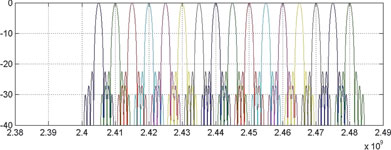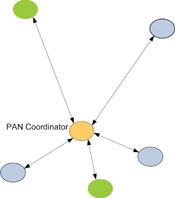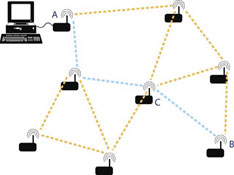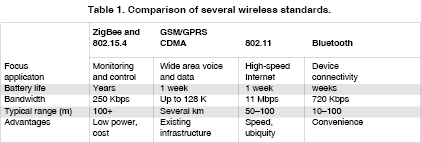
Creating wireless networks can be done using a variety of RF protocols. Some protocols are proprietary to individual vendors, others are industry standards. This article explores the ZigBee protocol industry standard for data transmission, and the IEEE 802.15.4 protocol on which it was built. It defines the frequencies used, the bandwidth it occupies, and networking features unique to each of these protocols and explores the features they were designed to exploit.
802.15.4
802.15.4 is a standard for wireless communication put out by the IEEE (Institute for Electrical and Electronics Engineers). The IEEE is a technical professional association that has put out numerous standards to promote growth and interoperability of existing and emerging technologies. The organisation has published the standards that define communication in areas such as the Internet, PC peripherals, industrial communication and wireless technology. As two examples, the IEEE 802.11 standard defines communication for wireless LAN and 802.16 defines communication for broadband wireless metropolitan area networks.
While both of those wireless standards are concerned with higher bandwidth Internet access applications, 802.15.4 was developed with lower data rate, simple connectivity and battery application in mind. The standard specifies that communication can occur in the 868–868,8 MHz, 902–928 MHz or 2,400–2,4835 GHz industrial scientific and medical (ISM) bands. While any of these bands can technically be used by 802.15.4 devices, the 2,4 GHz band is more popular as it is open in most countries worldwide. The 868 MHz band is specified primarily for European use, whereas the 902–928 MHz band can only be used in the United States, Canada and a few other countries and territories that accept the FCC regulations.
The 802.15.4 standard specifies that communication should occur in 5 MHz channels ranging from 2,405 to 2,480 GHz. In the 2,4 GHz band, a maximum over-the-air data rate of 250 Kbps is specified, but due to the overhead of the protocol the actual theoretical maximum data rate is approximately half of that. While the standard specifies 5 MHz channels, only approximately 2 MHz of the channel is consumed with the occupied bandwidth.
At 2,4 GHz, 802.15.4 specifies the use of direct sequence spread spectrum modulation and uses an offset quadrature phase shift keying (O-QPSK) with half-sine pulse shaping to modulate the RF carrier. Figure 1 shows the various channels at the spacing specified by 802.15.4.

The 802.15.4 standard allows for communication in a point-to-point or a point-to-multipoint configuration. A typical application involves a central coordinator with multiple remote nodes connecting back to this central host, as shown in Figure 2.

MaxStream’s XBee Series 1 family of radios can be set up to operate in a point-to-point, point-to-multipoint or a peer-to-peer configuration. While standard 802.15.4 always requires a coordinator, the MaxStream radios are set up so that a coordinator is not required.
ZigBee
ZigBee is a protocol that uses the 802.15.4 standard as a baseline and adds additional routing and networking functionality. The ZigBee protocol was developed by the ZigBee Alliance, a group of companies that worked in cooperation to develop a network protocol that can be used in a variety of commercial and industrial low data rate applications.
What ZigBee is designed to do is add mesh networking to the underlying 802.15.4 radio. Mesh networking is used in applications where the range between two points may be beyond the range of the two radios located at those points, but intermediate radios are in place that could forward on any messages to and from the desired radios.
As an example, referring to Figure 3, suppose it is required to transmit data from point A to point B, but the distance is too great between the points. The message could be transmitted through point C and a few other radios to reach the destination. The ZigBee protocol is designed so that if a number of different radios were deployed as in Figure 3, the radios would automatically form a network without user intervention.

The ZigBee protocol within the radios will take care of retries, acknowledgements and data message routing. ZigBee also has the ability to self-heal the network. If the radio at point C was removed for some reason, a new path would be used to route messages from A to B.
Devices in the ZigBee specification can either be used as end devices, routers or coordinators. Routers can also be used as end devices. Since the ZigBee protocol uses the 802.15.4 standard to define the PHY and MAC layers, the frequency, signal bandwidth and modulation techniques are identical.
Because ZigBee was designed for low power applications, it fits well into embedded systems and those markets where reliability and versatility are important but a high bandwidth is not.
Table 1 offers a comparison of features with several other popular wireless technologies and their different applications.

The lower data rate of the ZigBee devices allows for better sensitivity and range, but of course offers less throughput. The primary advantage of ZigBee lies in its ability to offer low power and extended battery life.

© Technews Publishing (Pty) Ltd | All Rights Reserved